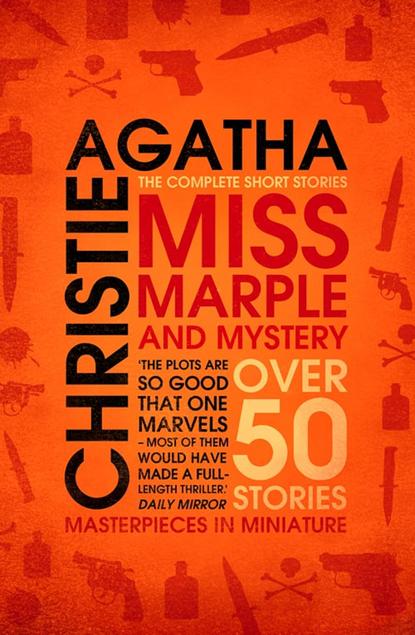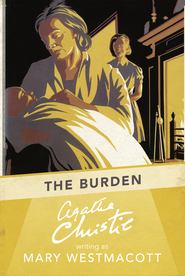По всем вопросам обращайтесь на: info@litportal.ru
(©) 2003-2024.
✖
Miss Marple – Miss Marple and Mystery: The Complete Short Stories
Автор
Год написания книги
2019
Настройки чтения
Размер шрифта
Высота строк
Поля
‘That you Ridgeway? Thought you’d like to know. The autopsy’s just concluded. Cause of death as I surmised. But as a matter of fact the cardiac trouble was much more serious than I suspected when she was alive. With the utmost care, she couldn’t have lived longer than two months at the outside. Thought you’d like to know. Might console you more or less.’
‘Excuse me,’ said Charles, ‘would you mind saying that again?’
‘She couldn’t have lived longer than two months,’ said the doctor in a slightly louder tone. ‘All things work out for the best, you know, my dear fellow –’
But Charles had slammed back the receiver on its hook. He was conscious of the lawyer’s voice speaking from a long way off.
‘Dear me, Mr Ridgeway, are you ill?’
Damn them all! The smug-faced lawyer. That poisonous old ass Meynell. No hope in front of him – only the shadow of the prison wall …
He felt that Somebody had been playing with him – playing with him like a cat with a mouse. Somebody must be laughing …
12 Within a Wall (#ulink_dd33bb39-539e-52aa-88ec-e52443ebaf17)
‘Within a Wall’ was first published in Royal Magazine, October 1925.
It was Mrs Lemprière who discovered the existence of Jane Haworth. It would be, of course. Somebody once said that Mrs Lemprière was easily the most hated woman in London, but that, I think, is an exaggeration. She has certainly a knack of tumbling on the one thing you wish to keep quiet about, and she does it with real genius. It is always an accident.
In this case we had been having tea in Alan Everard’s studio. He gave these teas occasionally, and used to stand about in corners, wearing very old clothes, rattling the coppers in his trouser pockets and looking profoundly miserable.
I do not suppose anyone will dispute Everard’s claim to genius at this date. His two most famous pictures, Colour, and The Connoisseur, which belong to his early period, before he became a fashionable portrait painter, were purchased by the nation last year, and for once the choice went unchallenged. But at the date of which I speak, Everard was only beginning to come into his own, and we were free to consider that we had discovered him.
It was his wife who organized these parties. Everard’s attitude to her was a peculiar one. That he adored her was evident, and only to be expected. Adoration was Isobel’s due. But he seemed always to feel himself slightly in her debt. He assented to anything she wished, not so much through tenderness as through an unalterable conviction that she had a right to her own way. I suppose that was natural enough, too, when one comes to think of it.
For Isobel Loring had been really very celebrated. When she came out she had been the débutante of the season. She had everything except money; beauty, position, breeding, brains. Nobody expected her to marry for love. She wasn’t that kind of girl. In her second season she had three strings to her bow, the heir to a dukedom, a rising politician, and a South African millionaire. And then, to everyone’s surprise, she married Alan Everard – a struggling young painter whom no one had ever heard of.
It is a tribute to her personality, I think, that everyone went on calling her Isobel Loring. Nobody ever alluded to her as Isobel Everard. It would be: ‘I saw Isobel Loring this morning. Yes – with her husband, young Everard, the painter fellow.’
People said Isobel had ‘done for herself’. It would, I think, have ‘done’ for most men to be known as ‘Isobel Loring’s husband’. But Everard was different. Isobel’s talent for success hadn’t failed her after all. Alan Everard painted Colour.
I suppose everyone knows the picture: a stretch of road with a trench dug down it, the turned earth, reddish in colour, a shining length of brown glazed drainpipe and the huge navvy, resting for a minute on his spade – a Herculean figure in stained corduroys with a scarlet neckerchief. His eyes look out at you from the canvas, without intelligence, without hope, but with a dumb unconscious pleading, the eyes of a magnificent brute beast. It is a flaming thing – a symphony of orange and red. A lot has been written about its symbolism, about what it is meant to express. Alan Everard himself says he didn’t mean it to express anything. He was, he said, nauseated by having had to look at a lot of pictures of Venetian sunsets, and a sudden longing for a riot of purely English colour assailed him.
After that, Everard gave the world that epic painting of a public house – Romance; the black street with rain falling – the half-open door, the lights and shining glasses, the little foxy-faced man passing through the doorway, small, mean, insignificant, with lips parted and eyes eager, passing in to forget.
On the strength of these two pictures Everard was acclaimed as a painter of ‘working men’. He had his niche. But he refused to stay in it. His third and most brilliant work, a full-length portrait of Sir Rufus Herschman. The famous scientist is painted against a background of retorts and crucibles and laboratory shelves. The whole has what may be called a Cubist effect, but the lines of perspective run strangely.
And now he had completed his fourth work – a portrait of his wife. We had been invited to see and criticize. Everard himself scowled and looked out of the window; Isobel Loring moved amongst the guests, talking technique with unerring accuracy.
We made comments. We had to. We praised the painting of the pink satin. The treatment of that, we said, was really marvellous. Nobody had painted satin in quite that way before.
Mrs Lemprière, who is one of the most intelligent art critics I know, took me aside almost at once.
‘Georgie,’ she said, ‘what has he done to himself? The thing’s dead. It’s smooth. It’s – oh! it’s damnable.’
‘Portrait of a Lady in Pink Satin?’ I suggested.
‘Exactly. And yet the technique’s perfect. And the care! There’s enough work there for sixteen pictures.’
‘Too much work?’ I suggested.
‘Perhaps that’s it. If there ever was anything there, he’s killed it. An extremely beautiful woman in a pink satin dress. Why not a coloured photograph?’
‘Why not?’ I agreed. ‘Do you suppose he knows?’ ‘Don’t you see the man’s on edge? It comes, I daresay, of mixing up sentiment and business. He’s put his whole soul into painting Isobel, because she is Isobel, and in sparing her, he’s lost her. He’s been too kind. You’ve got to – to destroy the flesh before you can get at the soul sometimes.’
I nodded reflectively. Sir Rufus Herschman had not been flattered physically, but Everard had succeeded in putting on the canvas a personality that was unforgettable.
‘And Isobel’s got such a very forceful personality,’ continued Mrs Lemprière.
‘Perhaps Everard can’t paint women,’ I said.
‘Perhaps not,’ said Mrs Lemprière thoughtfully. ‘Yes, that may be the explanation.’
And it was then, with her usual genius for accuracy, that she pulled out a canvas that was leaning with its face to the wall. There were about eight of them, stacked carelessly. It was pure chance that Mrs Lemprière selected the one she did – but as I said before, these things happen with Mrs Lemprière.
‘Ah!’ said Mrs Lemprière as she turned it to the light.
It was unfinished, a mere rough sketch. The woman, or girl – she was not, I thought, more than twenty-five or six – was leaning forward, her chin on her hand. Two things struck me at once: the extraordinary vitality of the picture and the amazing cruelty of it. Everard had painted with a vindictive brush. The attitude even was a cruel one – it had brought out every awkwardness, every sharp angle, every crudity. It was a study in brown – brown dress, brown background, brown eyes – wistful, eager eyes. Eagerness was, indeed, the prevailing note of it.
Mrs Lemprière looked at it for some minutes in silence. Then she called to Everard.
‘Alan,’ she said. ‘Come here. Who’s this?’
Everard came over obediently. I saw the sudden flash of annoyance that he could not quite hide.
‘That’s only a daub,’ he said. ‘I don’t suppose I shall ever finish it.’
‘Who is she?’ said Mrs Lemprière.
Everard was clearly unwilling to answer, and his unwillingness was as meat and drink to Mrs Lemprière, who always believes the worst on principle.
‘A friend of mine. A Miss Jane Haworth.’
‘I’ve never met her here,’ said Mrs Lemprière.
‘She doesn’t come to these shows.’ He paused a minute, then added: ‘She’s Winnie’s godmother.’
Winnie was his little daughter, aged five.
‘Really?’ said Mrs Lemprière. ‘Where does she live?’
‘Battersea. A flat.’
‘Really,’ said Mrs Lemprière again, and then added: ‘And what has she ever done to you?’
‘To me?’
‘To you. To make you so – ruthless.’

















